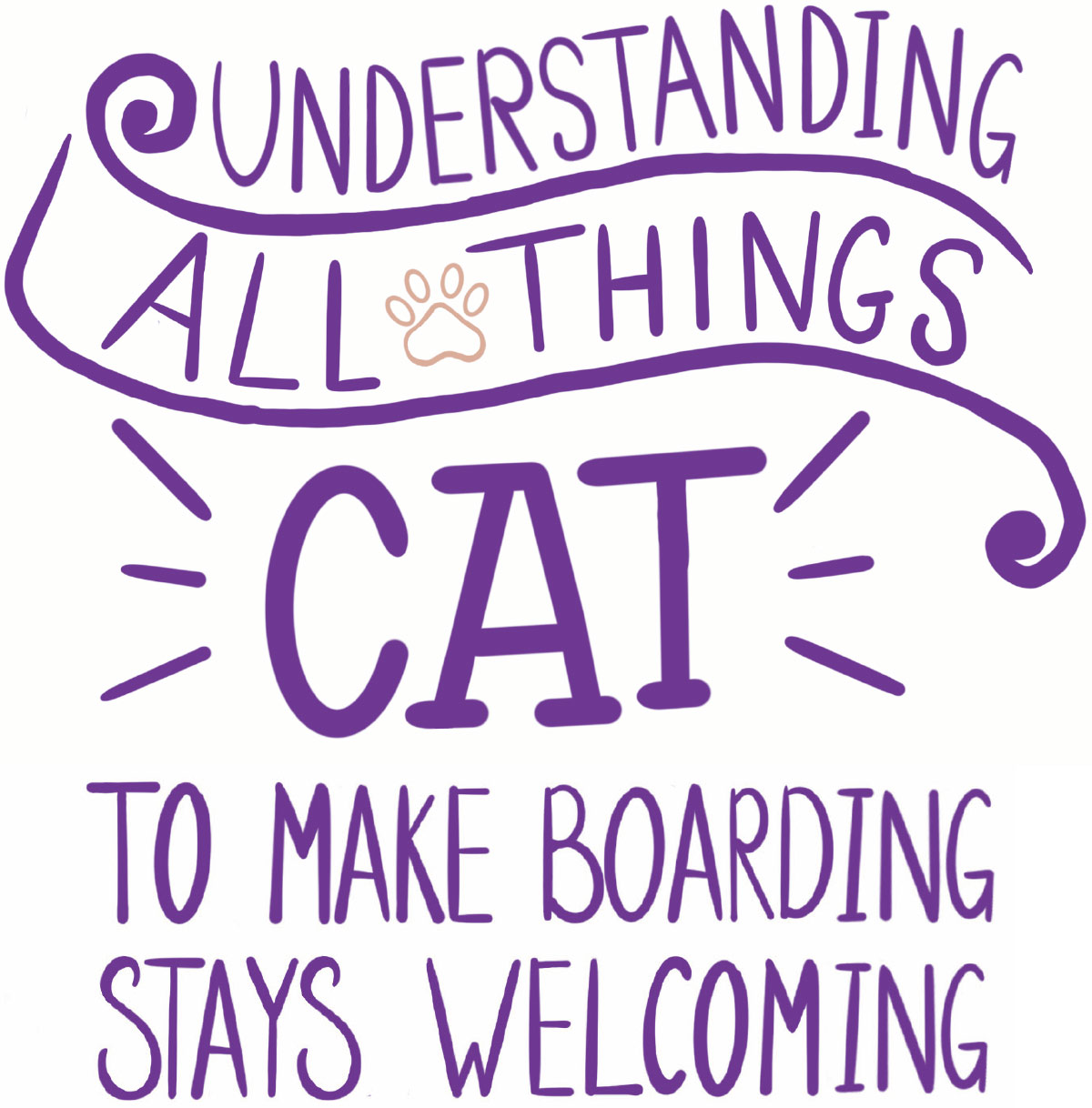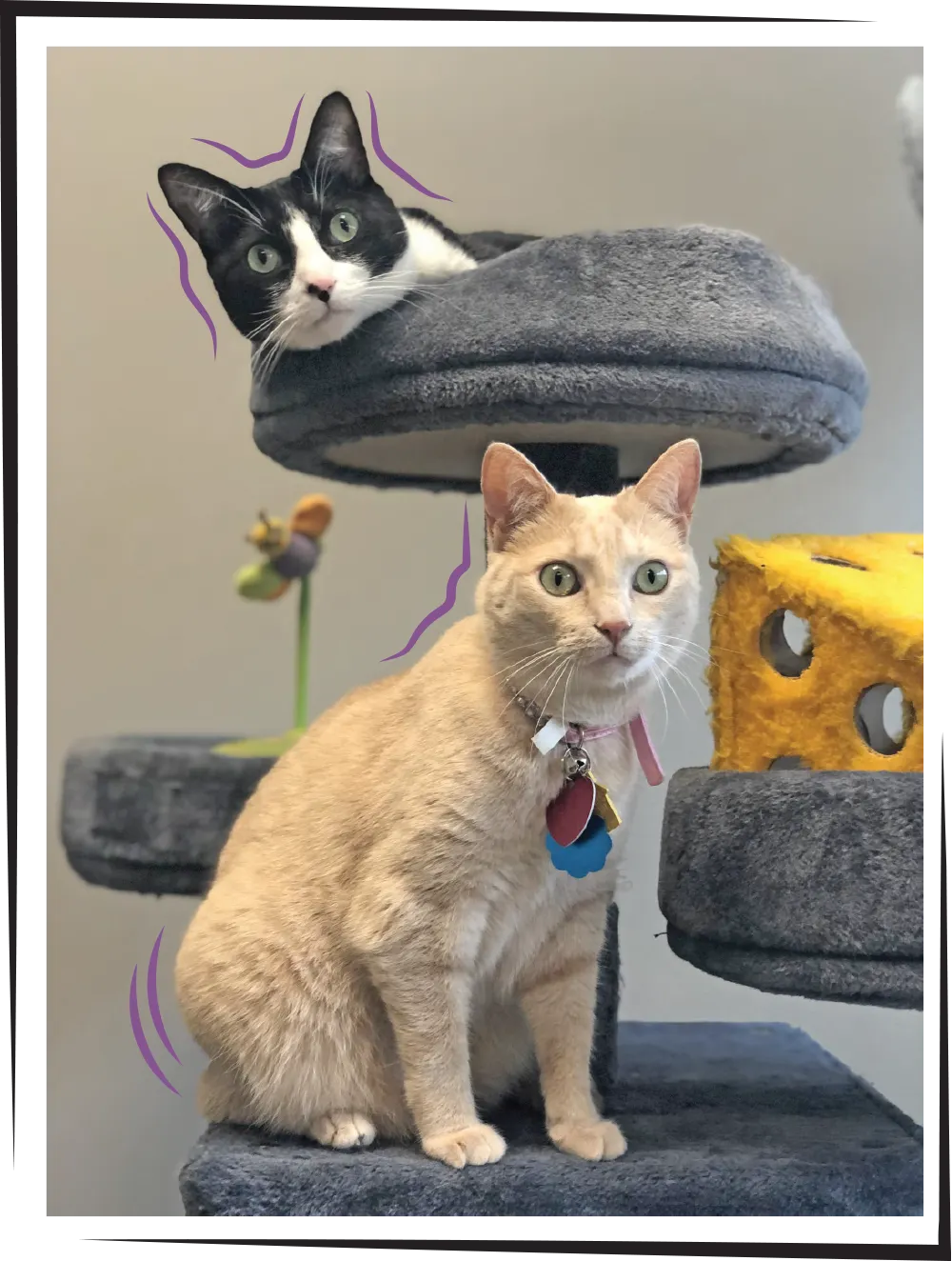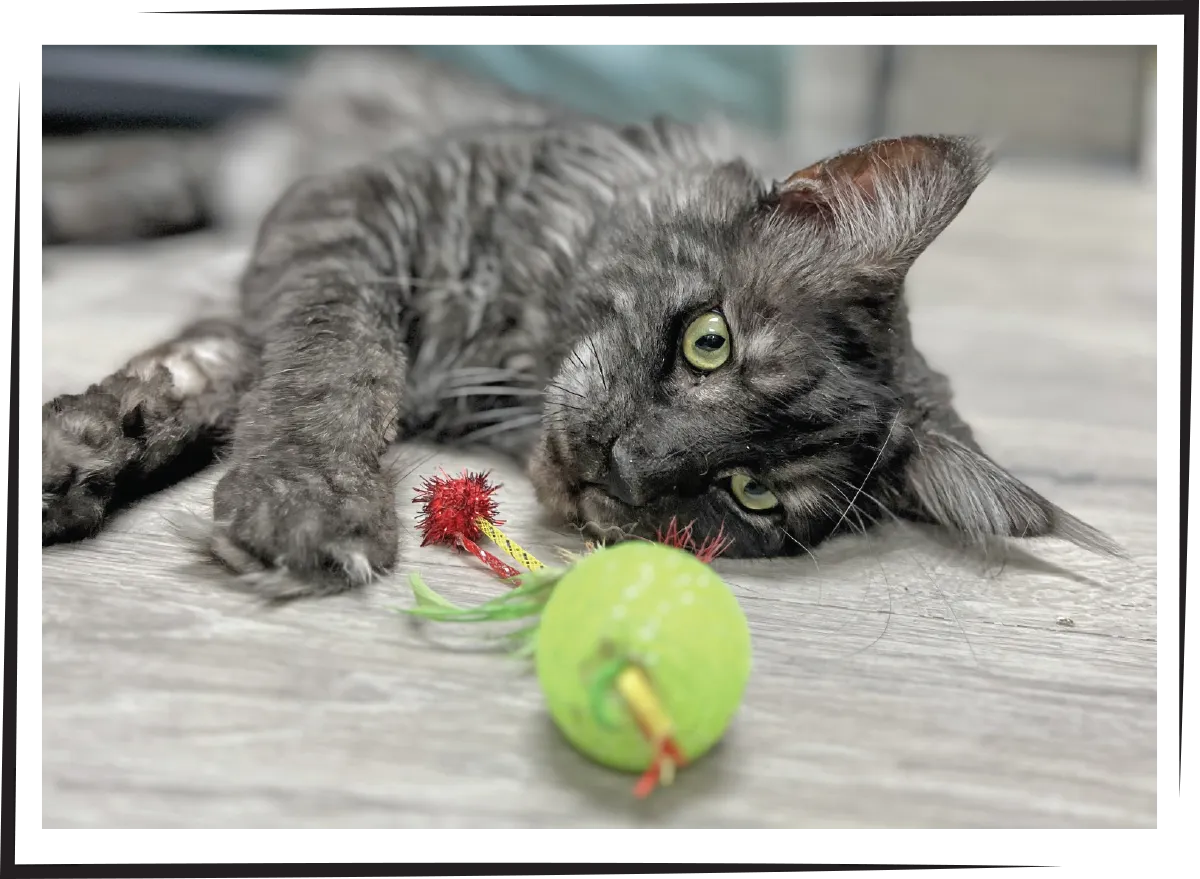Animal Behavior

By Arden Moore
Photos provided by PawHootz
 he cats of today are undergoing a much-welcomed identity transformation. Views of cats as simple-minded, furry homebodies who nap and groom all day are diminishing. This public perception shift of cats can be credited, in part, to social media where cats are being depicted surfing, hiking and performing acrobatic tricks on popular social media apps. Some cats have even completed pet therapy training to serve as feline goodwill ambassadors to people in nursing homes, libraries and schools.
he cats of today are undergoing a much-welcomed identity transformation. Views of cats as simple-minded, furry homebodies who nap and groom all day are diminishing. This public perception shift of cats can be credited, in part, to social media where cats are being depicted surfing, hiking and performing acrobatic tricks on popular social media apps. Some cats have even completed pet therapy training to serve as feline goodwill ambassadors to people in nursing homes, libraries and schools.
It is also becoming a wider-known fact that spending 24-7 inside a home alone can trigger some cats to become bored, stressed and destructive. Like dogs, they need regular physical and mental enrichment opportunities. That’s why the pet boarding industry is seeing the need to offer dedicated areas of their facilities to cats for daycare and boarding. These areas typically include vertical perches, sturdy cat trees, plenty of napping places, room to zoom, various cat toys, climbing walls or even computer tablets with cat games.
Cindy Prado, the general manager of PawHootz, a pet boarding and daycare business which caters to both dogs and cats in Hurst, TX, says, “We provide enrichment for cats who are being boarded overnight or for a week or longer, but we are also seeing more people taking advantage of kitty daycare where they drop their cats off and pick them up after work.”
“We have cats here whose families are going away on vacation or business trips that range from senior cats who need to receive medications and feedings on time to shy cats who we provide a safe environment for to help them become a bit more social,” Cindy shares.

– Cindy Prado
General Manager of PawHootz
All cats coming to PawHootz undergo behavior and health evaluations, and play styles are also identified. Another important aspect is deciphering quirky cat behaviors so staff members are educated about why cats do what they do.

All cats coming to PawHootz undergo behavior and health evaluations, and play styles are also identified. Another important aspect is deciphering quirky cat behaviors so staff members are educated about why cats do what they do.
Here are a few examples of some feline-specific behaviors:
- Feline Zoomies. The official term is called FRAP (frenetic random activity periods) by animal behaviorists. These bursts of high energy typically occur one to two times a day. They can be activated by a specific trigger, such as spotting an unreachable cat on a tree branch or discovering a new cat toy on the floor. Keep in mind that cats are hunters with innate needs to stalk, chase and pounce on prey. Some cats can get so revved up that they can bite or scratch, so staff need to be aware of this for their safety.
- The Flehmen Response. Cats have powerful senses of smell. Some will seem to get into a hypnotic state when they sniff something and open their mouths, wrinkle their noses, grimace and curl back their lips. The scientific explanation is that a cat draws in the scent through a specialized sac known as Jacobsen’s organ located in the roof of the mouth to dispatch info to the brain. If staff see such a pose in a boarded cat, it should be a momentary action. If not, the cat may have some underlying medical issue that needs to be addressed by a veterinarian.
- Self-Grooming After Misjudging a Jump. When cats get caught doing something that startles or surprises them, they instinctively turn to grooming as a way to calm down, collect their thoughts and restore dignity. If a staff member witnesses a cat misjudge a jump or a slip and fall, just do a safety head-to-tail check on the cat to make sure he/she is not injured.
“We attach a feather to the laser wand so cats can capture something in their paws,” says Cindy from PawHootz. “We know the importance of providing a cat with a physical reward after chasing the laser beam.”
Another plus of offering cat boarding to clients is that their cats usually come home contented: “Instead of the cat hanging out at home by himself, he can interact with others, get in a little exercise, and get to explore a new, safe environment,” Cindy concludes.


